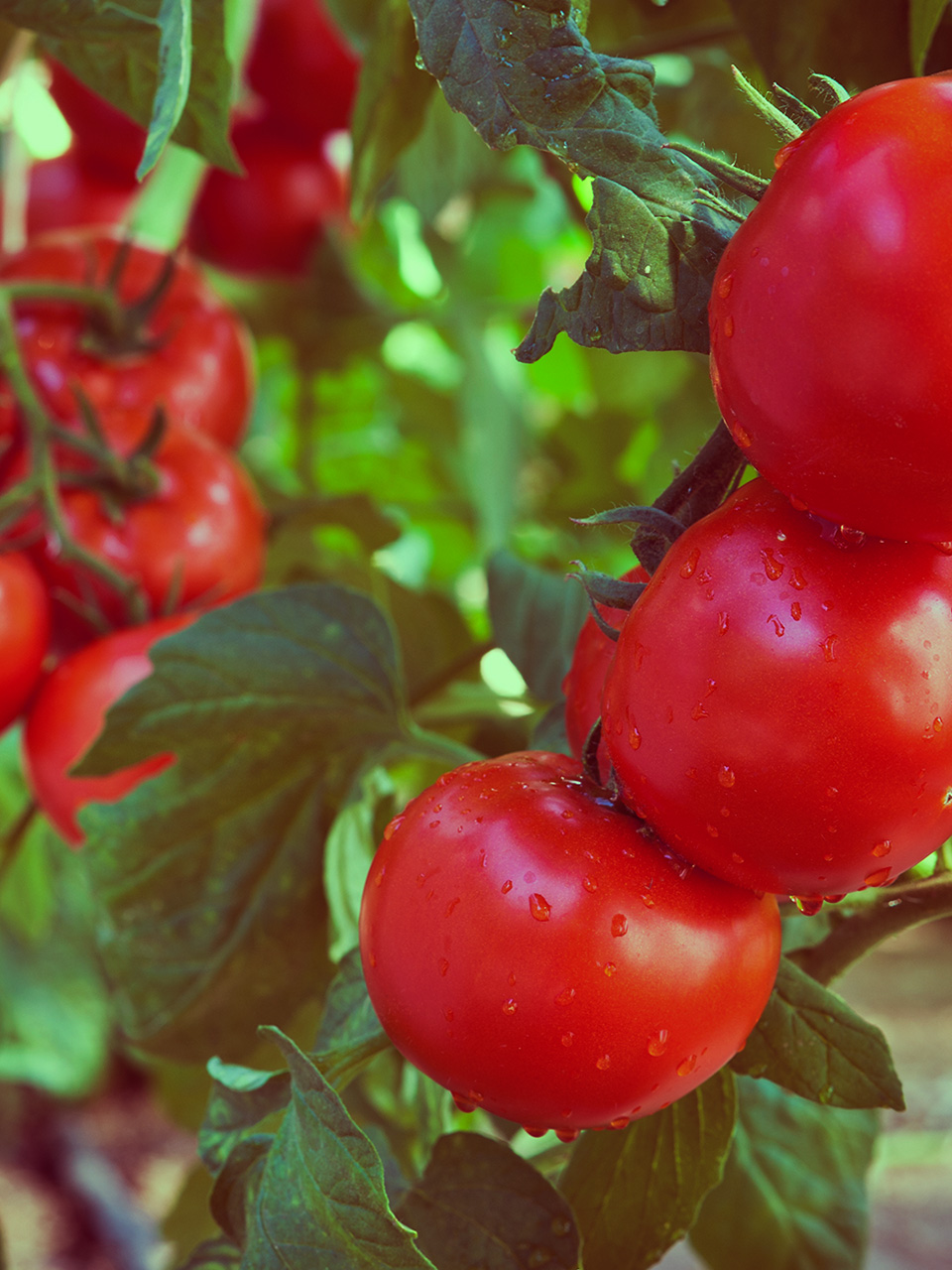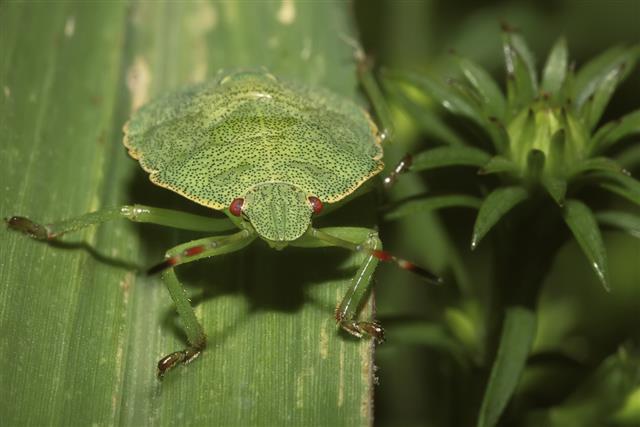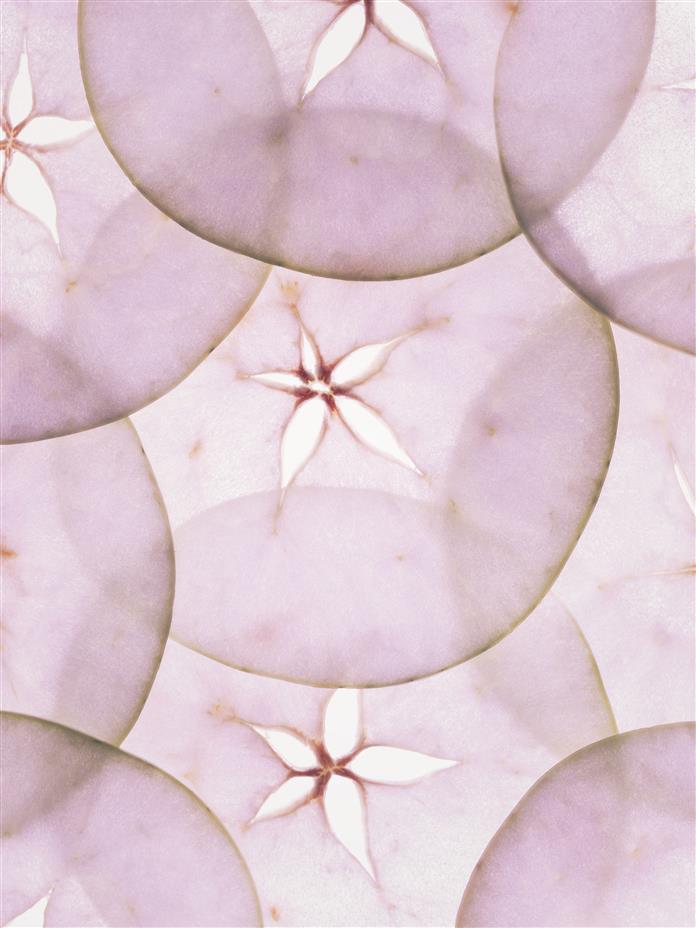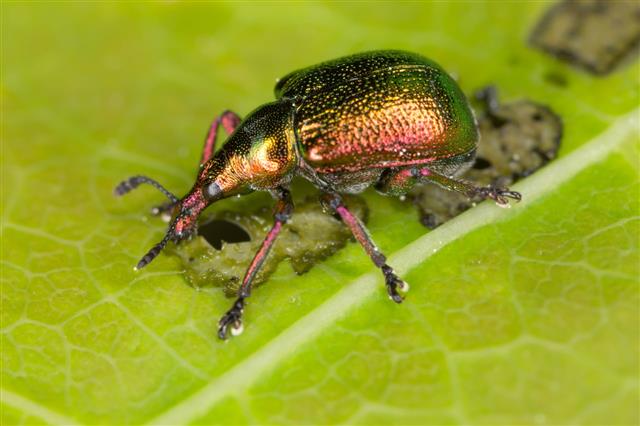
Tap to Read ➤
Bugs on Tomato Plants
Priya Johnson


We introducing you to different bugs that infest tomato plants and information regarding how to get rid of them. Aphids, flea beetles, greenhouse whitefly, etc., are the different bugs that affect tomato plants.

Little red bugs on tomato plants can suck out all the joy from a gardener's face, who has spent hours laboring on the tomato patch. Besides red ones, we also find little white bugs on tomato plants, which makes one want to dunk the plant into freshwater and free the tomato plant off the infestation.
Aphids

Aphids are pests dwelling normally on the tip of the plants or on the underside of the leaf and can be easily identified. These pests are known to rapidly colonize the soft tissue portions of the plant.

They debilitate the plant by sucking the sap out of the parenchyma cells located just below the cuticle of the leaf. They conduce to yellowing of the leaves and leave a characteristic sticky excrement on the leaves called honeydew.

Aphids cause only minimal harm to the tomatoes, and hence can be mostly ignored. However, heavy infestations can cause withering of the infected parts. This is because all the sap has been sucked out from that particular area by the aphids. The leaves can also become sticky and may show the presence of black mold (harmless) called sooty mildew.
Control Measures: Application of contact insecticides like derris, pyrethrum, or soft soap solutions helps control aphids. However, for best results the treatment should be carried out at the onset of infection itself.
Flea Beetles

These tiny, fast-moving pests are quite difficult to spot, however, are the most easily recognizable tomato plant pests due to the distinctive damage caused by them.

These beetles cause scores of small holes in the leaves, which become larger as the leaves grow. Generally, this kind of infestation is seen in April and July.

Control Measures: Contact insecticides are not very effective in case of flea beetles because they have the habit of hopping away as soon as they are disturbed. Thus, using trap crops such as radish help lure the flea beetles away from the tomatoes more effectively.
Greenhouse Whitefly
These insects like the aphids, quickly infest the plant and weaken it by sucking the sap out of the parenchyma cells below the cuticle. They use their piercing-sucking mouthparts to damage the plants.
The tomato plant features wilting, new growth, and chlorotic leaves. Deformed fruits and discoloration of the tomatoes are also conduced by this infestation. Same is the case with black flies too.
Control Measures: Insecticides such as derris, pyrethrum, soft soap solutions, etc., are good ways to get rid of these pests in the early stages.
Red Spider Mite
These are tiny wingless insects that have a one-piece body and eight legs. These red spider mites are also known as greenhouse spider mites or two-spotted spider mites.
One can recognize spider mite infestation by the small spider webs formed on the plant or the white speckling on the upper leaf surface. As the attack progresses, the leaves attain a bronzed appearance, wither off, and then die.
Control Measures: Since spider mites thrive in hot and dry conditions, to get rid of them one can just make their environment miserable. Twice a day, spray the plants with a fine mist of water or apply contact insecticides like derris, pyrethrum, or soft soap solutions. One will have to apply them on the upper and lower sides of the leaf every 5-7 days.
Leaf Miner
These pests are tiny larvae that burrow in between the leaf layers. These leave behind puncture marks on new leaves. These marks are caused by adult females during the oviposition as well as the feeding processes.
The onset of infestation can be identified by the wiggle marks present in the leaves. They reduce the leaf's ability to photosynthesize and also cause premature leaf drop.
Control Measures: Contact insecticides are not effective in controlling these pests as these are within the leaf membrane. Systemic insecticides, if used, leave the crop not fit for consumption. In this case, it is best to leave the pest alone.
Even if the plant is 60% affected, the plant growth or fruit growth will not be affected. After harvesting the crop, one can double dig the soil where the tomatoes grew the miners. One should repeat this process for a few times before re-planting the crops later in spring.
Besides the mentioned bugs there are stink bugs, tomato hornworms, and Colorado potato beetles that infect tomato plants. These bugs can be quite a pain in the neck, however, by taking the appropriate measures of control, one can free the gorgeous tomato plant from the clasps of these pesky bugs.